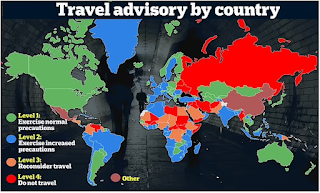If you don't trust your instruments, you should not leave terra firma. Thinking you are going to straddle the two you will end up in worse shape than the fellow who has one foot in the canoe and the other firmly planted on the boat dock.
So, there I was helping a buddy with a new firearm. While sighting it in, the fellow a few positions to the left very kindly offered to let us play with his new toy. I think maybe he was trying to amortize the cost by getting more use out of it. "Look, honey, I helped out a couple of hobos at the shooting range today..."
Bullets that were "expected" to have a muzzle velocity of 3100 fps were reported to have a muzzle velocity of 2750 fps. Bullets that were "expected" to have a muzzle velocity of 2700 fps had reported velocities of 2200 fps.
Results were replicated with a second chronograph.
A second generation of load development (different smokeless propellant) produced a velocity of 2460fps with the same bullet that produced 2200fps in the first try. That load has promise.
Hmmm!
It is widely accepted that reputable companies that publish reloading data use SAAMI standard test barrels that are cut with "maximum material, minimum clearance" chambers, throats and barrels. That is, the tightest chambers, the shortest throats, the steepest allowable leads and the minimum diameter barrels.
Safety over-rides all other considerations. The maximum powder weights listed in the manuals are under SAAMI standards for those one-in-a-thousand barrels. Because if a manufacturer makes 100,000 rifles, then 100 of those weapons will be TIGHTER, and have higher pressures than SAAMI standards.
There are "fast barrels" and "slow barrels". Fast barrels are closer to SAAMI minimum standards. Slow barrels have more generously cut chambers, longer free-bore (throat) and so on.
It appears that my friend has a barrel with very generously cut chamber and free-bore.
Pressure makes velocity and...
John Barsness, a better-than-average gun-writer claims that higher-than-expected velocities are evidence of higher-than-expected-pressures. A 30-06 load that might be expected to produce 2900fps but chrono-ed at 3100 fps has "issues". One reloader experienced this and after double-checking found out that he was using very hot Magnum primers and elderly, pull-down powders. Maybe not a great combination.
On the flip side, Barsness claims that if you are using a "canister grade" smokeless powder of recent manufacture from a reputable supplier and your velocities are very consistently and significantly lower than published data, you can undoubtedly well below SAAMI published maximum pressures.
Range estimation
Humans suck at estimating range.
When LASER range-finders first became commercially available, they were incredibly expensive.
One gun-store in a western state (Wyoming?) had a display model. The store suggested that customers estimate the distance from the front door of the gun-store to the flag-pole in front of City Hall. Most estimates ranged from 440 yards ( a 1/4 mile) to 1000 yards (almost a mile).
Please bear in mind that this was in a state of far horizons, pronghorn antelope and long shots.
Trusted patrons were allowed to step outside the door and "shoot" the flag-pole with the LASER range finder to test their judgement. It was 225 yards from the gun-store's front door.
Not believing that, many patrons paced off the distance and had to admit that the device was on-the-money. Who knew?
What that means is that very few mere-mortals (excluding Marines...and one can argue that they do not fall under the category "mere-mortal) will ever launch a bullet at a target more than 200 yards away. Maybe one-in-ten-thousand.
If you are following my logic, then the criteria for muzzle-velocity and maximum range becomes maximum-mid-range-deviation-from-line-of-sight of 2" and an impact velocity between 2800fps-and-2000fps to keep bullets in the sweet-spot for terminal ballistics.
Using that criteria, the 2200fps load drops below 2000fps at 125 yards and has a +/- 2" trajectory of about 185 yards. That makes it a 125 yard load.
Adding a puny 300fps (to 2500fps) stretches that to 225 yards for terminal ballistics and 200 yards for +/- 2" trajectory excursions.
To be excruciatingly explicit: at 2200fps, the load is the limiting a factor in how far proficient hunters can reach out and ethically harvest big-game animals. At 2500fps (77gr, 0.44 G1 BC) the shooter becomes the limiting factor in 9999/10,000 cases.
And, in all fairness, bow-hunters routinely harvest deer with arrows traveling at 300fps at ranges of less than 30 yards and thugs with knives and sharpened screwdrivers murder humans at much shorter ranges.








%205.jpg)










